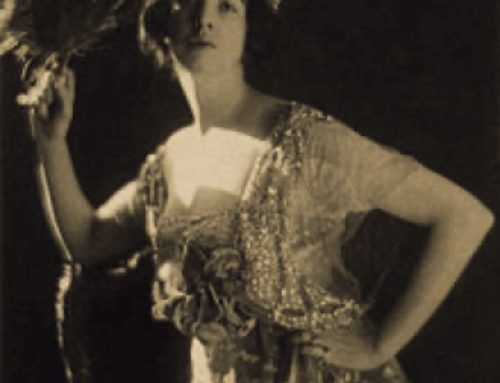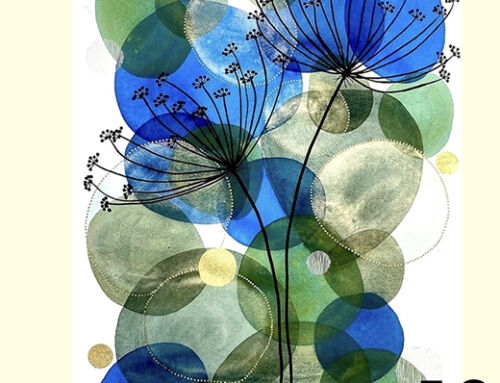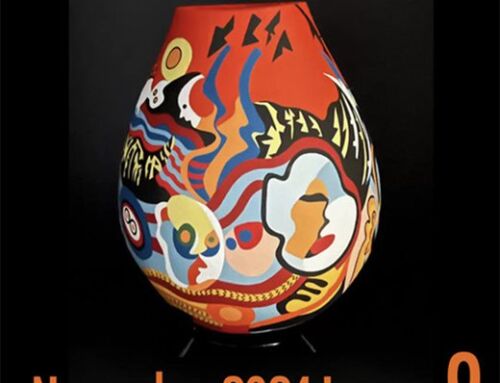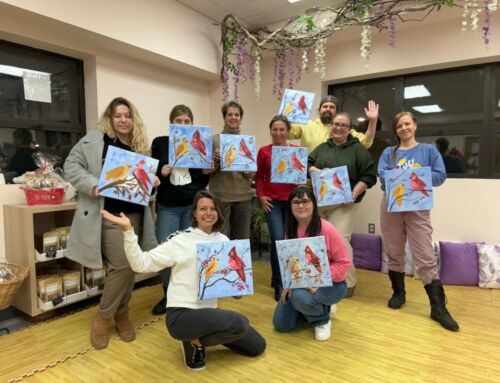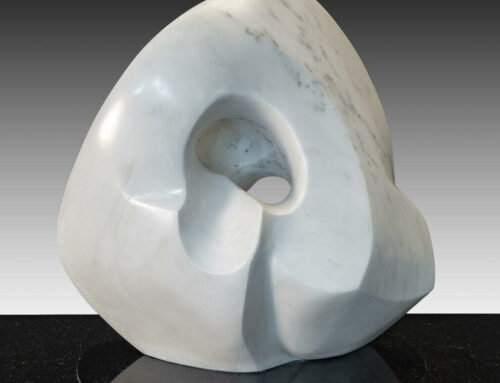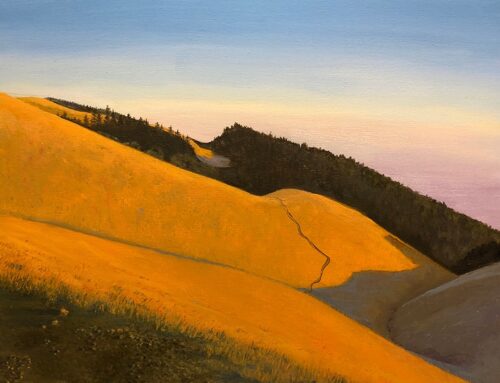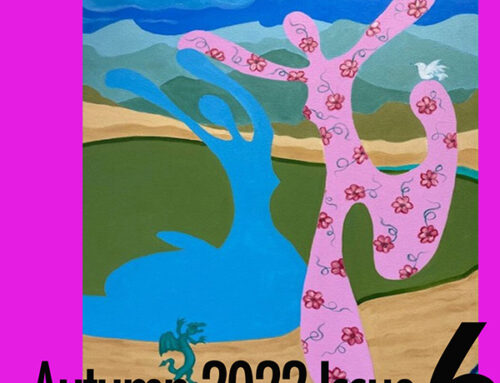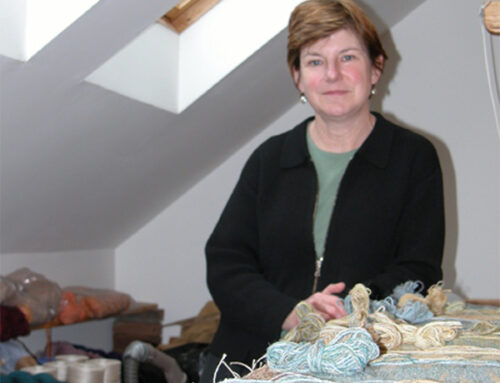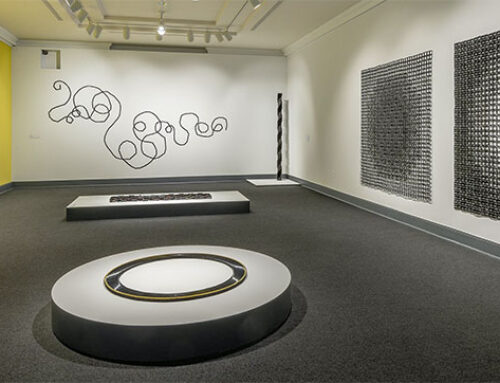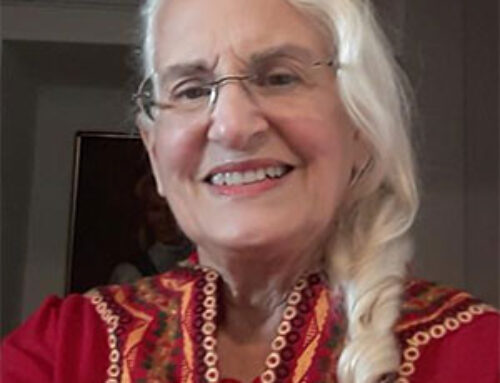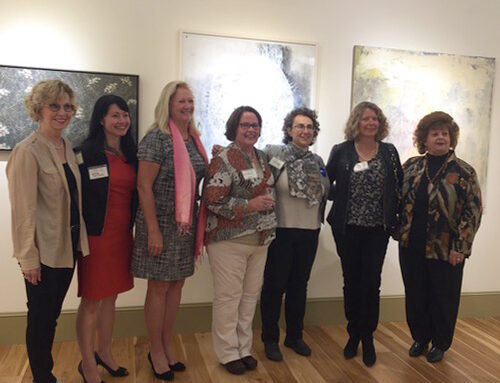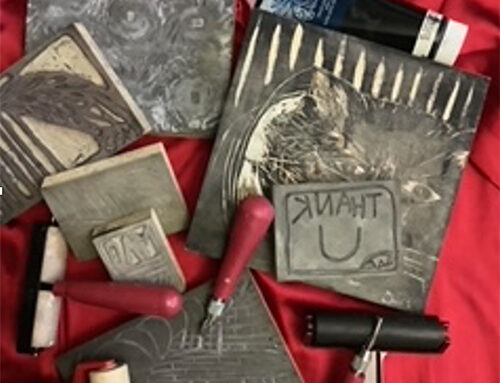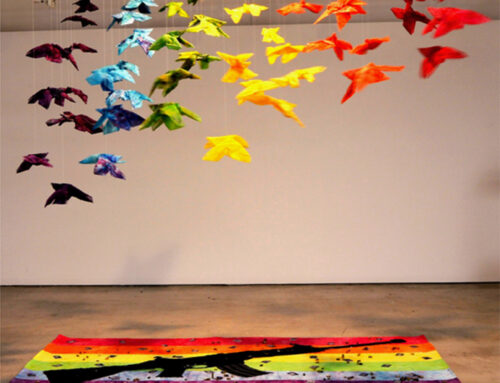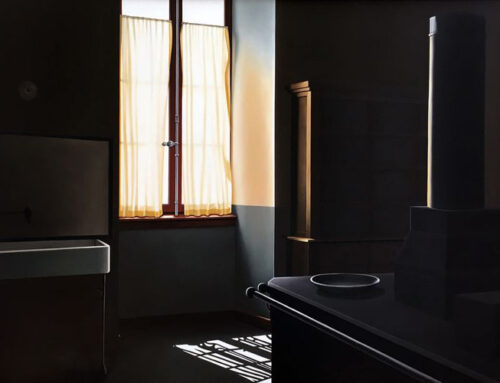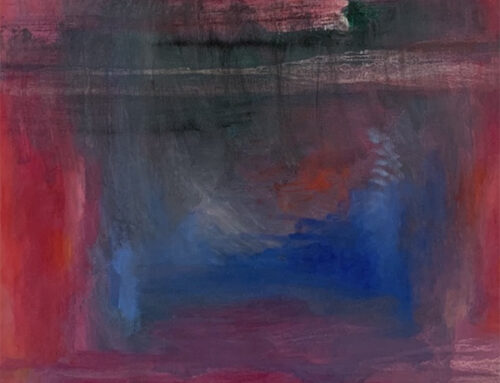by Sarah Katz
Students and young people ask me about how to come up with creative ideas and I say the biggest obstacle to creativity is fear of failure. You can never really invent anything unless you put that aside. The distance between failure and success, in art, is a whisper or a whiff of divine lunacy. A friend of mine suggested I look at an artist named Emily Carr for this column, and I found her very exciting. She was talented, committed, iconoclastic, refreshing, and well before her time in subject matter.

Carr on Horseback, c. 1909, Cariboo Regional District, British Columbia, Canada, private collection
She was a Canadian artist of the early part of the last century. Her early training was English painting, but she went to France and met the Fauvists and was inspired by color. Then she was off on her own trajectory. She traveled to remote areas of Canada to paint scenes of indigenous people and the awesome beauty of the Canadian wilderness.

Emily Carr, Totem Walk at Sitka, 1907, Art Gallery of Greater Victoria, Victoria, British Columbia, Canada. Wikimedia Commons.
“Whenever I could afford it I went up North, among the Indians and the woods, and forgot all about everything in the joy of those lonely, wonderful places. I decided to try and make as good a representative collection of those old villages and wonderful totem poles as I could, for the love of the people, and the love of the places, and the love of the art.” Emily Carr
The thing I find so attractive about her is that she is unselfconscious about her choices. She had a gallery showing of her paintings shortly after she returned from France and it was unpopular. That didn’t stop her from painting what interested her. She was not fazed by unpopularity. She once had a teaching job she had to leave because the students thought she cursed too much. She finally achieved recognition in her late fifties.

Emily Carr, Odds and Ends, 1938-39, Art Gallery of Greater Victoria, Victoria, Canada.
By then, she was painting the great Canadian landscape before it disappeared
“There’s a torn and splintered ridge across the stumps I call “the screamers”. These are the unsawn last bits, the cry of the tree’s heart, wrenching and tearing apart just before she gives that sway and the dreadful groan of falling, that dreadful pause while her executioners step back with their saws and axes resting and watching. It’s a horrible sight to see a tree felled, even now, though the stumps are grey and rotting, As you pass among them you see their screamers sticking up out of their own tombstones, as it were. They are their own tombstones and their own mourners.” Emily Carr
I want to include one more of her paintings of the wilderness.
I love the way she uses her brushstroke to communicate the living forest, the wind in the branches, the sap flowing. I can just about smell the trees.
If you want to read more about her, here are some links for you:
https://en.wikipedia.org/wiki/Emily_Carr
https://www.aci-iac.ca/art-books/emily-carr/biography/
https://www.gallery.ca/collection/artist/emily-carr
https://www.amazon.com/s?k=emily+carr&ref=nb_sb_noss_1

Red Cedar, 1931, oil on canvas
Collection of the Vancouver Art Gallery,
Gift of Mrs. J.P. Fell

Forest Trees, 1937-1939 (circa), Oil on canvas,
40 x 24 3/4 in, 101.6 x 62.9 cm



